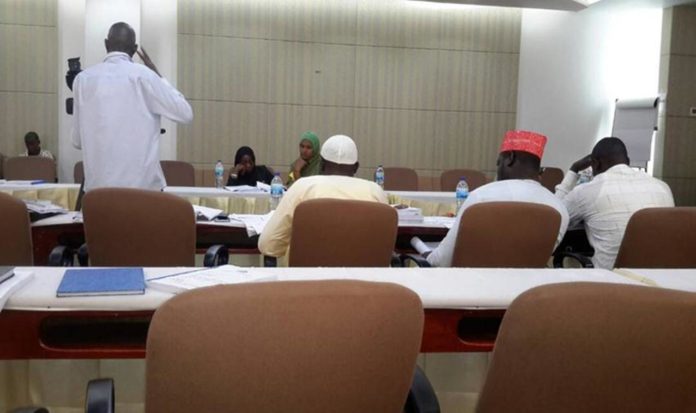By: Yankuba Jallow
The National Assembly (NA) Select Committee on Local Government and Lands, Ombudsman and IEC, received the audited activity report of the Kerewan Area Council on their projects, for the years 2015 and 2016.
The report stated that the K A Council has through experience, resolved that local solutions to local problems can only be effective through stakeholder participation, with communities taking the lead role.
According to the report, the projects planned to be implemented in the year 2016, were geared towards enhancing the development of communities through participatory approaches; that the constraints the Council faced in the implementation of projects and programmes, included the need to strengthen its manpower capacity especially at the middle and senior management levels, through appropriate training, adequate staff strength in terms of quality and mobility, especially in their day to day functions.
“The inability to remain focused in its primary functions and responsibilities in order to be able to make impact on the lives of the people, and the arrears owed to NAWEC, continues to hinder the programmes and activities of the Council as a major challenge. Support from the Central Government is not forth coming. Grants and subventions as stipulated in the 2002 Local Government and Decentralisation Act, did not improve the inadequate staff training and capacity opportunities and hence skills deficiencies are not being effectively addressed. Rates and taxes have never been revised for the past thirty years and the demand on the Council to provide the necessary basic social amenities for tax payers, is on the increase. Government rates and car park dues are not reimbursed accurately and on time, the report indicated.
However, the report gave indicate that achievements have been gained in the drive towards the improvement of communities in some of these crucial areas; that these achievements include capacity and institutional development of decentralised structures through bottom-up facilitation processes aimed at empowering the people; provisions of infrastructure facilities such as labour saving devices and other income generating activities for the communities through collaborative efforts with partner institutions like Government and NGOs, and significant support to women, youth groups, regional and or national events.
The report outlined that the main goal of the Council, is to build the institutional capacity to enable it fulfil its mandate as the primary facilitator of the development of the North Bank Region; that the projects implemented in the year 2015, were constructions of Septic tanks and soak aways within Kerewan, costing D43,680.00; fencing and clearing of trees within Kerewan costing D185,923.00, concrete pavement works in Essau, costing D866,160.00; building of a New Market in Salikenne, costing D564,000.00; road rehabilitation within Kerewan, costing D200,000.00 and Office Renovation and Concrete Pavement Works within Farafenni, costing D99,110.00. On K A Council and Gamworks’ CILIP Projects, the report indicate the construction of market canteens within Farafnni Market, costing D3,000,000.00; construction of canteens in Barra Market, costing D3,000,000.00 and the construction of a car park and canteens in Amdalai, costing D7,000,000.00.
On environmental sanitation, the report indicated that there is increase demand in the collection and disposal of waste; that the settlements of Farafenni and Barra are growing rapidly and therefore need more attention, despite efforts taken to make sure that waste collection tractors are available, to collect waste from the markets and other public places; that there are other business centres that are critical, and refuse collection cannot be carried out in these settlements due to inadequate technical, financial and human resource constraints. The report further indicate, that the indiscriminate disposal of refuse in settlements is a potential source of aesthetic nuisance and gastroenteritis; that excreta disposal is far from adequate within these communities, simply due to the high demand on such facilities and the limited resources available to K A Council.





















